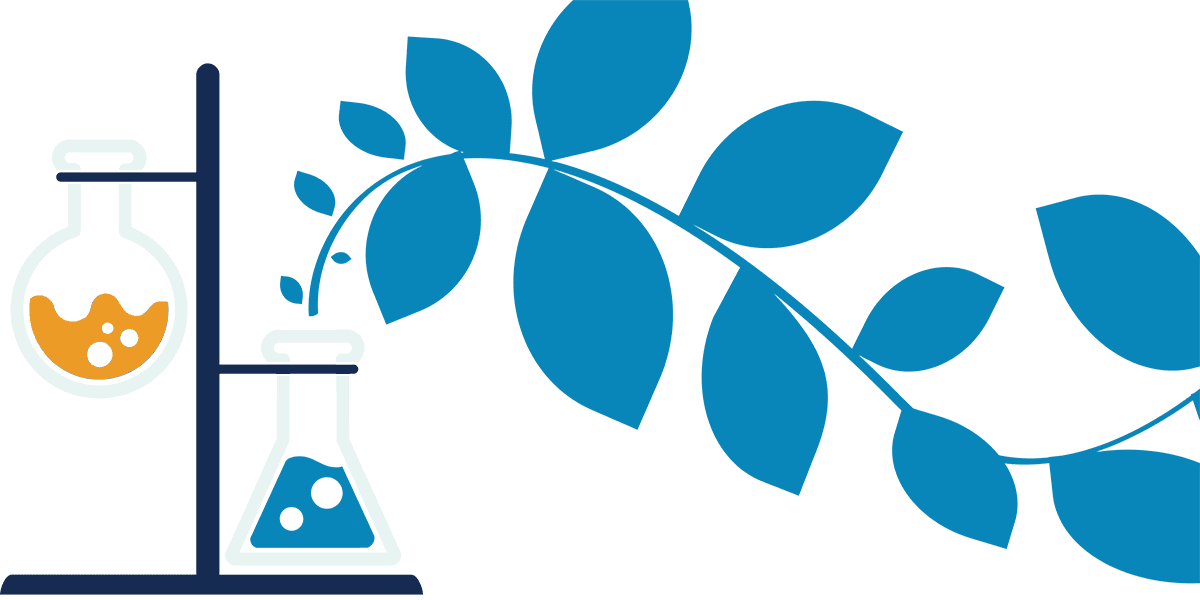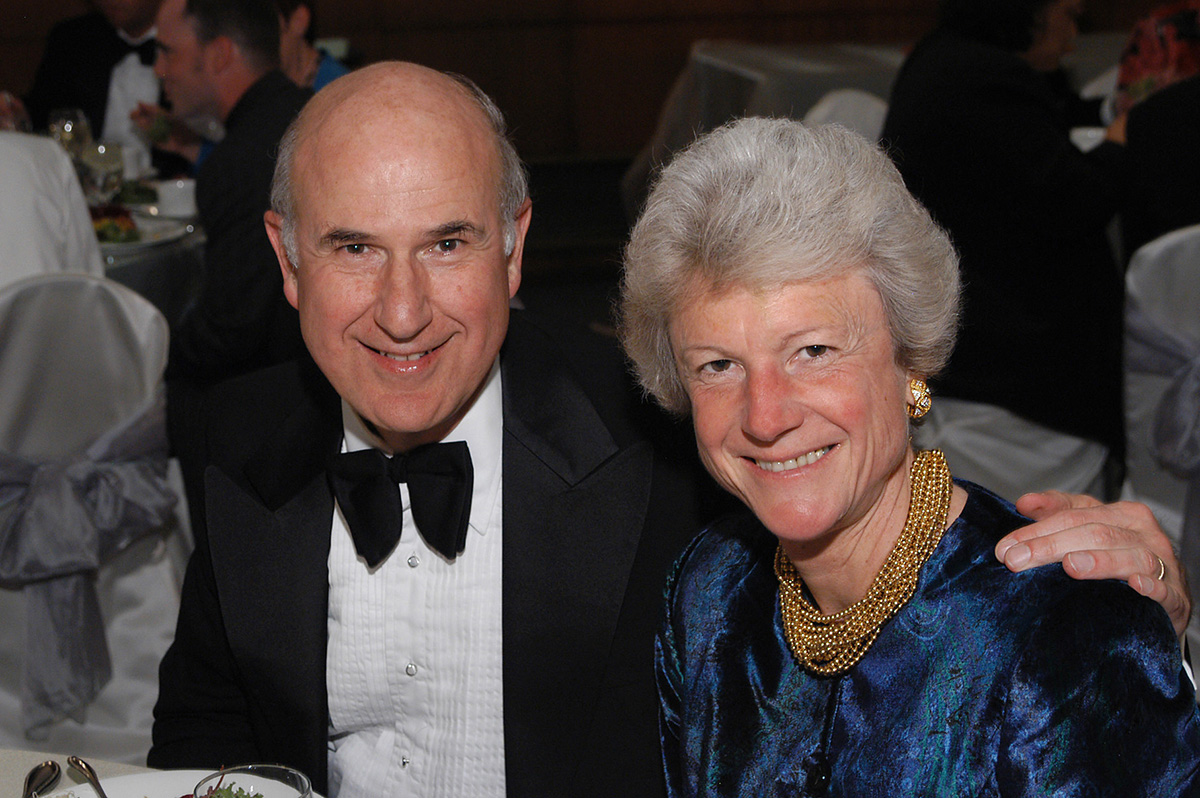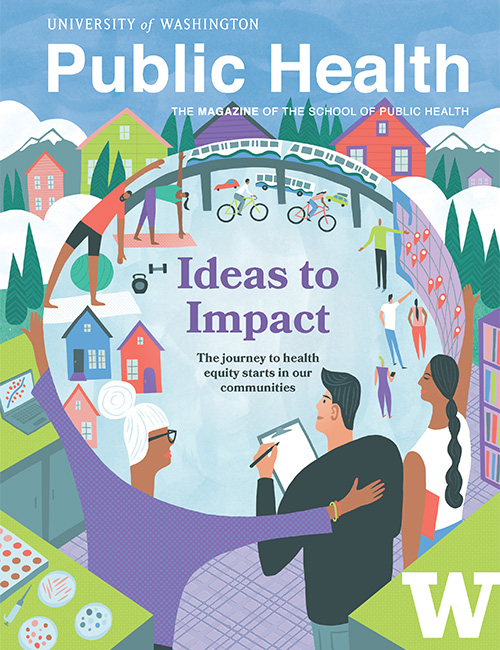WRITTEN BY STARRE VARTAN
ILLUSTRATION BY ELIZAR MERCADO

Louis Pasteur, discoverer of vaccines, stated a major truth: “Without laboratories, men of science are soldiers without arms.” Lab work was at the heart of making large-scale population health advances in his era — and it’s just as true today.
As a fellow public-health champion, Gilbert S. Omenn knows how right Pasteur was: he and his wife, Martha A. Darling, have recently bestowed one of the largest gifts ever received by the UW School of Public Health — specifically for new environmental health research laboratories at the School.

“Well-equipped laboratories and outstanding staff are essential to detect chemical, microbiological and physical exposures from the environment and drive progress in reducing such exposures and their risks to our health,” Omenn says.
Omenn credits his parents and his mentors for fostering his broad interdisciplinary interests and his drive to contribute to a better world. Professionally, he has embraced basic research, innovations in clinical genetics, public policy and leadership roles through the National Academies of Sciences, Engineering, and Medicine, the National Institutes of Health, the biotech world and a presidential and congressional commission on risk.
“When I graduated from Harvard Medical School, my speech on behalf of the class was ‘On Curiosity,’” Omenn says. That curiosity informed his life’s work. “Asking compelling questions for which we may have no current answers and taking the roads ‘less travel’d’ can be stimulating throughout our lives.”
Omenn’s wife, Martha, who he met 46 years ago in Paris, has a similar attitude about her career in international economics, first as a White House Fellow at the U.S. Treasury, then at Boeing and later in education policy. “I have always been drawn to problem solving. One challenge is finding the right tools. I view our investment in this suite of labs as providing vital tools to SPH students, faculty and partners as they address all sorts of environmental problems and work toward formulating solutions,” says Darling.
That marriage of curiosity and problem solving is at the heart of Omenn and Darling’s gift: “Experimental science depends on insightful hypotheses, cutting-edge technologies and places to bring together committed and collaborative researchers and students,” says Omenn. To that end, he sees newer and smarter lab spaces as imperative for the future of public health.
“This truly is a transformative gift,” says Dean Hilary Godwin. The old labs were “tired” and not state of the art, she notes. This was particularly surprising considering the strength of the laboratory research program in the School’s Department of Environmental & Occupational Health Sciences (DEOHS). In addition, the labs provide essential services for the state of Washington that began in 1951 with the Environmental Health Laboratory, which supported research into air pollution for local government. These services expanded in the 1960s to improve occupational health for the state’s workers via public worker compensation funds.
“Having up-to-date facilities is absolutely essential to maintain DEOHS’s strong rankings and competitive research program as well as their ability to continue serving the needs of the state,” says Dean Godwin.
This gift includes funding for modern, more efficient spaces for existing molecular toxicology, vivarium, cell culture and microbiology labs in the Roosevelt Building, as well as new labs for mass spectrometry, biosafety level 2, trace metals, inorganics and gas calibration analysis.
In addition, the Field Research and Consultation Group lab will be renovated, which will be ideal for prototyping new devices and keeping sample collection materials that are important to have on hand for larger, population-based research studies.
Elaine Faustman, director of the DEOHS Institute for Risk Analysis and Risk Communication, says she’ll be using the new labs and they will have an “exponential impact” on some of the most important work DEOHS scientists do. Faustman works to identify metals such as arsenic and cadmium that may cause negative health effects in children. She’ll be using the new labs for “low-level metal analysis capabilities, which is critical as the neurodevelopmental toxicity of metals continues to plague our region as well as our nation,” says Faustman. She and Omenn launched a multi-school course at the UW on Risk Assessment and Risk Management in 1982 that remains popular to this day.
That kind of far-reaching, large-scale public health work is exactly the kind of science Omenn and Darling aim to support with their gift. “As revealed to all during this pandemic, making a difference at the scale of populations — through innovative and trusted science, systems of public health services and compassionate care, and encouragement of healthful behaviors — fits with the School and its role in President Ana Mari Cauce’s Population Health Initiative,” says Omenn.
In thanks for this gift and previous gifts to the School and his long-standing commitment to public health, the UW is honoring Omenn with a new annual lecture focused on how science informs risk assessment and public engagement. The annual lecture will be hosted by DEOHS in the fall quarter.
DEOHS Chair Michael Yost says he’s building an incubator environment for both faculty and students. This lecture is part of that idea: “The transformational experience this offers our students is the unique combination of scientific skills and communication skills needed for effective collaboration,” says Yost.
Omenn and Darling hope to inspire others to “help make a better world, whatever their career or community focus.” Along with a focus on the natural world, Omenn says, “We want to inspire an appreciation for the interaction of individual differences and responsible behaviors with all kinds of environmental exposures, then to reduce disease risks and enhance wellness.”
About Gilbert S. Omenn
Omenn came to the UW in 1969 as a fellow in Medical Genetics with pioneering UW Professor Arno G. Motulsky. In 1971, Omenn joined the faculty in the Medical Genetics tracks in Internal Medicine. He launched the Robert Wood Johnson Clinical Scholars Program in 1975 across the UW Schools of Medicine, Public Health and Business. Meanwhile, he also served in Washington, D.C. as a White House Fellow at the Atomic Energy Commission and later as an associate director of the White House Office of Science and Technology Policy and Office of Management and Budget. He returned to the UW in 1982 in the School of Medicine and as chair of DEOHS and then as dean of the School of Public Health from 1982 to 1997. Omenn championed toxicology, eco-genetics and risk assessment as research foci for DEOHS, which led to the School receiving major funding from the National Institute of Environmental Health Sciences and Environmental Protection Agency.
In 1997, Omenn moved to the University of Michigan to serve as chief executive officer of the Health System and executive vice president for medical affairs. For the past 15 years, he has led the University-wide Center for Computational Medicine and Bioinformatics and the global Human Proteome Project. In addition, he is an affiliate professor at the UW School of Public Health in DEOHS.
If you are interested in creating your own legacy in the UW School of Public Health, please contact Megan Kagel, associate dean for advancement, at mkingram@uw.edu or 206-616-7197.
